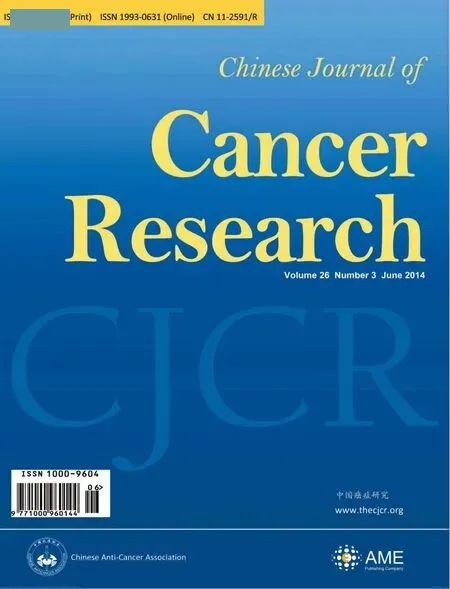Laparoscopic approach for hepatocellular carcinoma: where is the limit?
Giuseppe Maria Ettorre,Giovanni Battista Levi Sandri
Division of General Surgery and Liver Transplantation,S.Camillo Hospital,Rome,Lazio,Italy
Hepatocellular cancer (HCC) is the sixth most common malignant tumor worldwide and the most common primary liver cancer (1).Liver resection or liver transplantation is the therapeutic gold standards in patient with HCC.Due to advanced disease,extrahepatic metastases,or inadequate liver reserve,only 15% to 30% of patients with HCC can undergo to surgery (2).Five-year risk of recurrence of HCC after resection is as high as 70% because the underlying chronic liver disease continues to put the patient at risk for the development of new cancer nodules (3).Starting from the assumption that recurrence may be newly treated with surgery,laparoscopic approach is recommended,when applicable,for limiting the abdominal adhesions.Since 2000,more than 600 cases of laparoscopic resection for HCC have been reported,with no difference on the oncologic outcomes between open or laparoscopic approach (4).In 2008,the Louisville consensus of experts suggested that the best indications for laparoscopy were solitary lesions less than 5 cm,located in the anterior segments,at a distance from the line of transection,the hepatic hilum,and the vena cava (5).Nowadays,those indications seem to be implemented.
Piardiet al.(6) have analyzed the laparoscopic resection for HCC in the Western and in the Middle-Eastern World.The authors have reviewed English and Chinese literature of papers with up-to-15 cases reported,with intent to compare resection approach,technical approaches,postoperative course and outcomes.All series were composed by retrospective analyses.For Western experience,11 studies were analyzed,two of them with more than 100 patients.Thirteen studies were analyzed from Middle Eastern experience,with only one study with more than 100 patients.Patient selection appeared to be quite uniform between the two regional scenarios.Laparoscopic approach was recommended for lesions within 5 cm.In Western experience,Child-Pugh score indication was uniform in all series,Child B/C being only sporadicly reported.On the other hand,in Middle Eastern series,patients with Child B/C were more frequently resected with laparoscopic approach.For Middle East authors tumor location does not seem to be a selection criterion compared with Western authors,as reported in the Louisville statements (5),where resection in posterior segment are more difficult to planned.This difference may be explain by the characteristics of patients,in Middle Eastern (BMI<25) patient seem to be leaner than in Western (BMI>26).Morbidity and mortality were acceptable in both groups.Resection margin in Middle East was reported to be <1 cm in 62.5% of cases.These results are in contrast with the >2 cm-free margin recommended by Shi Met al.(7).However,a recent comparative study of oncologic and clinical outcomes demonstrated that there is no difference between open or laparoscopic approaches in relation to resection margin,and oncologic outcomes of laparoscopic liver resection for HCC is not inferior to open liver resection (8).Ettorreet al.compared laparoscopic liver resection (38 were HCC) in two groups with underlined liver disease and normal liver,without detecting differences in terms of morbidity and mortality risks (9).A French multicentric study concludes that laparoscopic approach should be proposed as a fi rst-line treatment in patients with HCC (10).A report of fi ve patients treated with intercostal laparoscopic approach for the resection of segments 7-8 has been proposed (11).A Chinese group suggested pushing up to 10 cm of diameter the limit of HCC treatable with laparoscopic resection (12).Mini-invasive approach is commonly adopted as a bridge treatment for HCC-patients waiting for liver transplantation (13).Laparoscopic approach presents the advantages of a minimally invasive procedure (less postoperative pain,fast recovery and early return to work).In case of recurrence,a fi rst laparoscopic approach does not contraindicate a new laparoscopy,consenting to present few adhesions.
In conclusion,we can assume that laparoscopic liver resection is commonly performed worldwide in patients with HCC and underlined liver disease.Even if the surgical cohort have a small difference in these two worlds (HBV infection more frequent in Middle Eastern).Western and Middle Eastern scenarios present comparable experiences and good results in terms of patient survival.Laparoscopic approach should be routinely performed as first-line approach in patients with HCC.
Acknowledgements
Disclosure:The authors declare no conflict of interest.
1.Lai Q,Lerut JP.Hepatocellular cancer: how to expand safely inclusion criteria for liver transplantation.Curr Opin Organ Transplant 2014;19:229-34.
2.Tsuzuki T,Sugioka A,Ueda M,et al.Hepatic resection for hepatocellular carcinoma.Surgery 1990;107:511-20.
3.El-Serag HB.Hepatocellular carcinoma.N Engl J Med 2011;365:1118-27.
4.Gaillard M,Tranchart H,Dagher I.Laparoscopic liver resections for hepatocellular carcinoma: current role and limitations.World J Gastroenterol 2014;20:4892-9.
5.Buell JF,Cherqui D,Geller DA,et al.The international position on laparoscopic liver surgery: The Louisville Statement,2008.Ann Surg 2009;250:825-30.
6.Piardi T,Sommacale D,Baumert T,et al.Laparoscopic resection for hepatocellular carcinoma: comparison between Middle Eastern and Western experience.Hepatobiliary Surg Nutr 2014;3:60-72.
7.Shi M,Guo RP,Lin XJ,et al.Partial hepatectomy with wide versus narrow resection margin for solitary hepatocellular carcinoma: a prospective randomized trial.Ann Surg 2007;245:36-43.
8.Kim SJ,Jung HK,Lee DS,et al.The comparison of oncologic and clinical outcomes of laparoscopic liver resection for hepatocellular carcinoma.Ann Surg Treat Res 2014;86:61-7.
9.Ettorre GM,Laurenzi A,Lionetti R,et al.Laparoscopic liver resections in normal and cirrhotic livers: a retrospective analysis in a tertiary hepato-biliary unit.Dig Liver Dis 2014;46:353-7.
10.Soubrane O,Goumard C,Laurent A,et al.Laparoscopic resection of hepatocellular carcinoma: a French survey in 351 patients.HPB (Oxford) 2014;16:357-65.
11.Lee W,Han HS,Yoon YS,et al.Role of intercostal trocars on laparoscopic liver resection for tumors in segments 7 and 8.J Hepatobiliary Pancreat Sci 2014.[Epub ahead of print].
12.Ai JH,Li JW,Chen J,et al.Feasibility and safety of laparoscopic liver resection for hepatocellular carcinoma with a tumor size of 5-10 cm.PLoS One 2013;8:e72328.
13.Lai Q,Pinheiro RS,Levi Sandri GB,et al.Laparoscopy in Liver Transplantation: The Future has Arrived.HPB Surg 2012;2012:148387.
 Chinese Journal of Cancer Research2014年3期
Chinese Journal of Cancer Research2014年3期
- Chinese Journal of Cancer Research的其它文章
- The unique phenotypes of adenocarcinoma of the esophagogastric junction in China
- Comments to young surgeons concerning laparoscopic spleenpreserving D2 lymph node dissection for advanced gastric cancer on the upper body
- Laparoscopic resection for hepatocellular carcinoma: comparison between Middle Eastern and Western experience
- Laparoscopic resection for hepatocellular carcinoma: eastern and western experiences
- Adenocarcinoma of esophagogastric junction: controversial classification, surgical management, and clinicopathology
- Laparoscopic liver resection: western versus eastern experience
